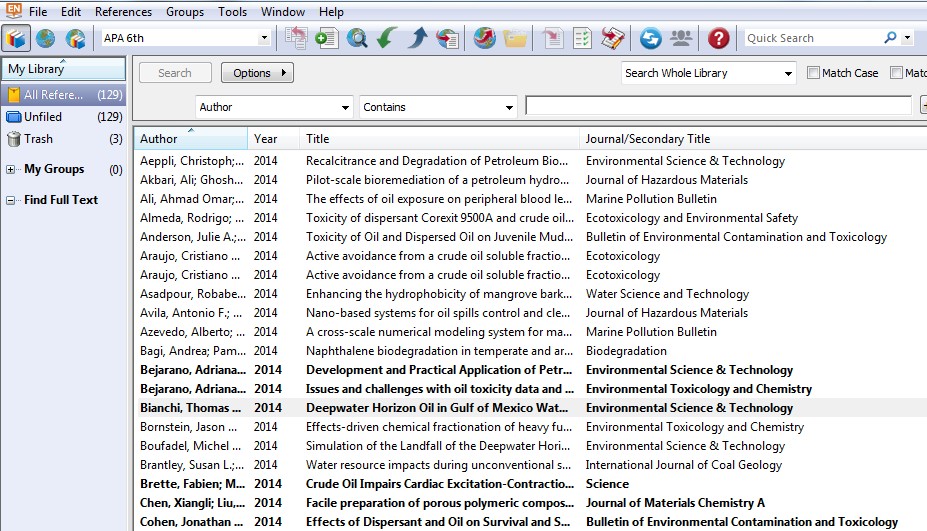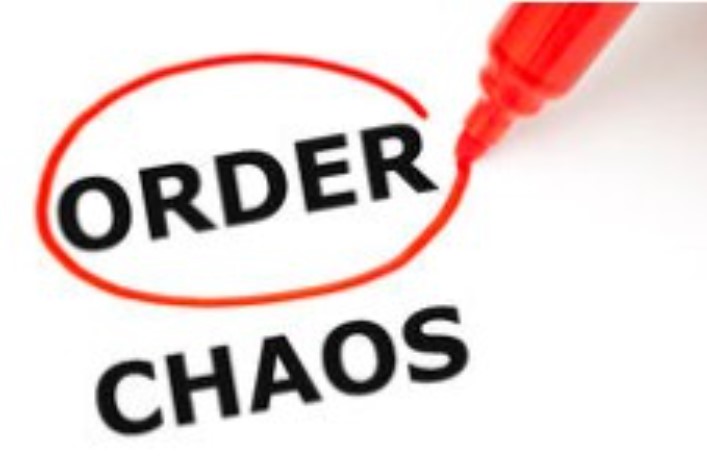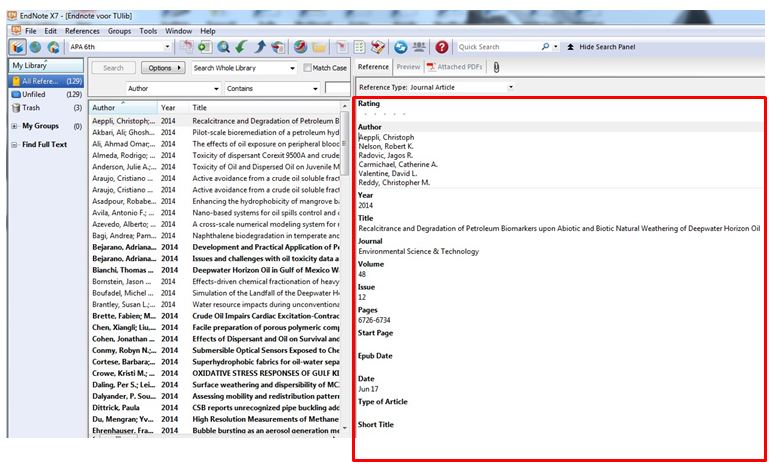Reference management
On this page
Choosing a tool
Collect your references
Organizing your references
Sharing your references
Relevant links
References
Storing, organizing, sharing and citing literature is an important part of research. You can do this manually, or use one of the many reference management tools available.
Reference management software (also called RMS) and tools help you to manage all the literature you find during your research, so that you can easily use them when writing a paper. They also make it easier to change the formatting of your reference list and to keep in-text references and reference lists consistent.
Before selecting a reference management tool, you should first decide what you want to use it for. Then you can select a tool based on your personal requirements. There are many factors to consider when choosing reference management software. For example:
- Is it something which is user-friendly to let you produce reference lists.
- You may also want it to work well with databases you are using.
- Or to share your references via the internet and organized into workgroups so all members can use the same reference database.
- Another factor to consider is price; is it free?
Gilmour and Cobus-Kuo (2011)[1] identified the following functionalities of reference management tools:
- Import citations from bibliographic databases and websites
- Gather metadata from PDF files
- Allow organization of citations within the reference manager database
- Allow annotation of citations
- Allow sharing of the reference manager database or portions thereof with colleagues
- Allow data interchange with other reference manager products through standard metadata formats (e.g. RIS, BibTeX)
- Produce formatted citations in a variety of styles
- Work with word processing software to facilitate in-text citation
Nowadays most tools offer more or less the same functionality; the decision on which to choose often depends on its popularity in a particular community. Additionally, you may want to look at price, (free) availability for students at your university, as well as at the technical support available at your university for your chosen tool.
Tip: The TU Delft Library supports EndNote and Mendeley.
What do you want to do?[2]
- Collect both references and full-text articles?
- Archive and organize your references?
- Share references?
- Store it “in the cloud”?
- Synchronize a reference database across devices?
- Edit reference styles when publishing in a particular journal?
- Share annotations and discuss references with other people?
Some tips to help you choose a Reference management tool:
- What do other people you know use?
- Take a look at some screenshots on the website of a tool; do you like what you see?
- Are there “how-to” videos on YouTube? If there are a lot of these, that is a good sign. Some tools even have a dedicated channel.
- Try to see if there is a forum: does it look helpful?
- Is the software compatible with your operating system and word processor?
- It is important to look for a tool which has a “stable version” that is up-to-date.
Tip: Check Wikipedia for a very detailed comparison of RMS.
Collect your references
Store your references of the selected literature/information in your reference management tool. Import it as soon as you find it, because that will save you time in the long run. You can download larger sets of search results from a database, or a single reference from a journal. You can also manually add references or extract reference information from a PDF file. When automatically downloading or extracting references, always check that they are complete and correct before you leave the database or website.
Organizing your references
In addition to the information you need to cite literature (author, title, year, …), it is worthwhile adding information that will help you retrieve, recognize and use the literature:
- when did you find it?
- where did you find it?
- what paper did you use the reference in?
- what course did you need the reference for?
- what did you think of it (your personal rating)?
- any tags, notes, keywords you find useful
Tip: Many tools allow you to create your own keywords and add notes to the information.
Sharing your references
If you want to collaborate with others and use a shared reference library, make sure you select a reference management tool that makes it easy to share references, allows added notes and check how many people the tool allows you to share your references with.
Some tools
| EndNote | Mendeley | Bibtex |
|---|---|---|
| supported by TU Delft Library and can be downloaded from https://software.tudelft.nl | TU Delft offers access to Mendeley. For more information see: Mendeley | |
| You can collect references from online resources and pdf’s or import references from bibliographic databases into an EndNote library, including full-text. | A free reference management tool and academic social network. Make your own fully-searchable library, cite as you write, and read and annotate your PDFs on any device. | An auxiliary tool to LaTeX for incorporating your references to a document. It provides storage of all references in an external database. |
| Tutorial: Endnote training | Tutorial: Mendeley | Tutorial: BibTeX |
Tip: References can also be exported from EndNote and Mendeley to BibTeX and thus also be used with LaTeX.
Relevant links
References
[1] Gilmour, R. & Cobus-Kuo, L. (2011). Reference Management Software: a Comparative Analysis of Four Products. Issues in Science and Technology Librarianship, (Summer).http://doi.org/10.5062/F4Z60KZF
[2] PhD on track. (n.d.). Reference managers. http://www.phdontrack.net/review-and-discover/reference-managers/
Dreamstime. (n.d.). Order or Chaos [Image]. https://www.dreamstime.com/royalty-free-stock-photo-order-chaos-image29422205



